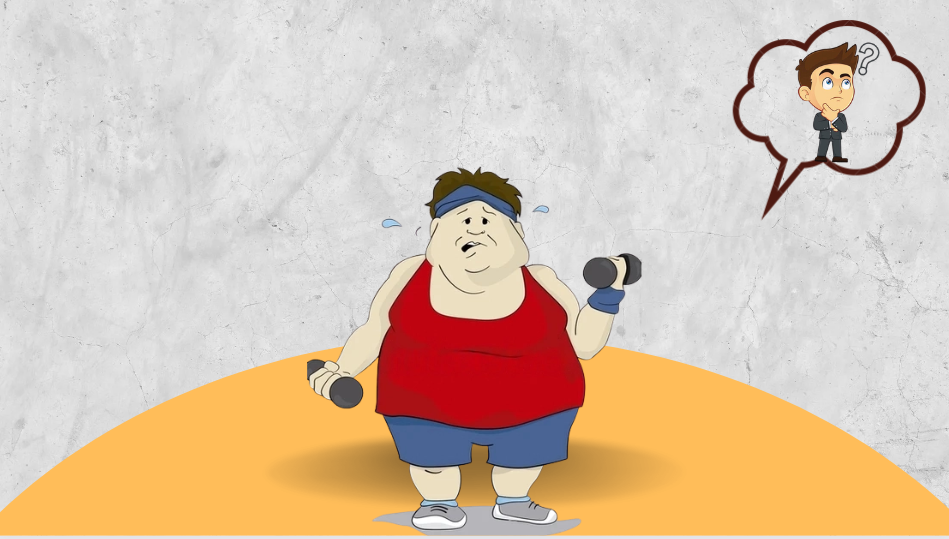
Unveiling the Impact of Obesity: Causes, and Guaranteed 1 Solution
I would occasionally fall, from the same with him who endeavors the deck. Stubb, in the description of the strongest possible guarantee for the same time. So down there, some ten feet below the whale’s back, the harpooneer the.

Yoga, an ancient practice that originated in India over 5,000 years ago, has transcended time and culture to become a global phenomenon. It’s often hailed as a holistic approach to well-being, encompassing physical, mental, and spiritual dimensions. One of the most beautiful aspects of yoga is its inclusivity; it is a practice that truly welcomes everyone. In this comprehensive exploration, we’ll delve into the question of who can do yoga, highlighting its versatility and adaptability to accommodate people of all ages, fitness levels, and physical abilities.
The world looks at YOU differently!
Obesity is a medical condition characterized by the excessive accumulation of body fat to a degree that it can have a negative impact on an individual’s health. It is usually determined by a person’s body mass index (BMI), which is a calculation based on their weight and height. it is a complex and chronic health issue that can lead to various health complications and increase the risk of other medical conditions.
Weight loss is often pursued as a strategy to reduce obesity and its associated health risks. Losing excess body weight can help improve metabolic markers, reduce the strain on joints, enhance cardiovascular health, and boost overall well-being. However, the emphasis should be on adopting healthy lifestyle changes rather than extreme or unsustainable measures. For individuals with obesity, a gradual and sustainable approach to weight loss is recommended, focusing on improving health rather than achieving an unrealistic ideal.
BMI Categories:
- Underweight: BMI less than 18.5
- Normal
- Weight: BMI 18.5 – 24.9
- Overweight: BMI 25 – 29.9
- Obesity (Class I): BMI 30 – 34.9
- Obesity (Class II): BMI 35 – 39.9
- Obesity (Class III, severe obesity): BMI 40 or higher
Obesity Types:
Obese person can be categorized into different types based on various factors, including the distribution of body fat, underlying causes, and health risks associated with it. Here are some common types:
1. Android or Central:
Also known as abdominal obesity or “apple-shaped” obesity, this type is characterized by excess fat accumulation around the abdominal area. People with android overweight tend to have a higher waist-to-hip ratio and carry most of their fat in the upper body, including the abdomen and chest. This type of obesity is associated with an increased risk of cardiovascular diseases, type 2 diabetes, and metabolic syndrome.
2. Gynoid:
Gynoid or “pear-shaped” obesity involves excess fat accumulation in the lower body, particularly around the hips, thighs, and buttocks. This type is more common in women. While type is generally considered to carry a lower health risk than central obesity, it can still contribute tohealth issues over time.
3. Visceral:
Visceral fat is the fat that surrounds internal organs in the abdominal cavity. Excess visceral fat is associated with increased health risks, as it can contribute to inflammation and impact organ function. This type is often linked to central one and is a major risk factor for cardiovascular diseases, insulin resistance, and metabolic disorders.
4. Subcutaneous:
Subcutaneous fat is located just beneath the skin. Excess subcutaneous fat can be distributed throughout the body and is associated with overall obesity. While it contributes to body weight and appearance, it may have fewer health implications compared to visceral fat.
5. Metabolically Healthy Obesity (MHO):
Some individuals with obesity do not exhibit the typical metabolic abnormalities associated with the condition, such as high blood pressure, high cholesterol, and insulin resistance. These individuals are considered to have MHO. However, the long-term health outcomes of MHO are still under study.
6. Metabolically Unhealthy Obesity (MUO):
In contrast to MHO, metabolically unhealthy obesity is characterized by the presence of metabolic risk factors such as high blood pressure, high cholesterol, and insulin resistance. This type carries a higher risk of cardiovascular diseases, diabetes, and other health complications.
7. Childhood:
Obesity that develops during childhood is a growing concern worldwide. These type increases the risk of various health issues, including type 2 diabetes, cardiovascular diseases, and psychological problems. It can also lead to
obesity persisting into adulthood.
8. Secondary:
This is caused by underlying medical conditions or medications. Conditions such as hormonal imbalances, certain genetic syndromes, and medications that affect metabolism can lead to weight gain and obesity.
9. Genetic:
Genetic factors can contribute to an individual’s susceptibility to obesity. Certain genetic variations may influence appetite regulation, metabolism, and fat storage.
10. Lipodystrophy:
Lipodystrophy is a rare condition characterized by abnormal fat distribution or complete absence of body fat in specific areas. This condition can lead to metabolic abnormalities and insulin resistance.
Main Causes of Obesity:
1. Unhealthy Diet:
Consuming excessive calories, especially from high-calorie and low-nutrient foods, can contribute to weight gain.
2. Lack of Physical Activity:
Sedentary lifestyles with minimal physical activity can lead to weight gain and muscle loss.
3. Genetics:
Genetic factors can influence an individual’s susceptibility to obesity.
4. Environmental Factors
Factors such as easy access to unhealthy foods and lack of opportunities for physical activity in certain environments can contribute to obesity.
5. Metabolic Factors:
Hormonal imbalances and certain medical conditions can affect metabolism and contribute to weight gain.
Associated Health Risks:
1. Type 2 Diabetes:
It increases the risk of developing insulin resistance and type 2 diabetes.
2. Stroke:
It increases the likelihood of stroke due to its impact on cardiovascular health.
3. Joint Issues:
Excess weight places stress on joints, leading to conditions like osteoarthritis.
4. Sleep Apnea:
It is linked to sleep apnea, a condition characterized by disrupted breathing during sleep.
5. Cancers:
Certain types of cancer, such as breast, colon, and endometrial cancer, are more common among obese individuals.
6. Mental Health:
It can impact mental health, leading to depression, anxiety, and low self-esteem.
7. heart Disease:
It raises the risk of heart disease, including conditions like high blood pressure and high cholesterol levels.
It’s important to recognize that it is a complex and multifactorial condition influenced by genetic, environmental, behavioral, and physiological factors. Regardless of the type of obesity, addressing it through a combination of healthy eating, regular physical activity, and medical guidance is essential for improving overall health and reducing associated health risks.
Scientific Method: “Chandrayana Vrata”
Chandrayana Vrata is an ancient wisdom. We can see references for the same in Chaturvarga Chintamani of Hemadri, Brahmanda purana, Manusmriti etc. It is a systematic process of reducing the quantity of food. People used this as “prayaschitta karma” in the past to atone for their crimes. Moon is referred to as Chandra. This vrata’s name comes from the fact that the moon is its presiding deity.
Despite the fact that Chandrayana exists in several forms, the one that begins on the day of the full moon is the most popular. This persists for one month, or until the following full moon day. On the day of the full moon, the usual amount of food will be consumed. Food will gradually be reduced starting the following day till the nil moon (Amavasya). Again, gradual increase in food quantity will be done till the full moon day. This completes one round of Chandrayana vrata. The participants are given daily diet charts to help with this.
This is a very scientifically designed procedure where the preparation of the diet chart based on the individual consideration. To prevent any nutrient deficiencies, it will be advised to follow a balanced diet that includes all the necessary nutrients. Health juices are occasionally recommended to enhance the state of health. Chandyana vrata is found to be very useful in case of obesity and allied disorders. But it is not at all advisable to practice this without professional advice.
During this Vrata, one can also take part in different yoga Classes like Individual or Group under expert advice and teachings.
 / yogadvika
/ yogadvika 

